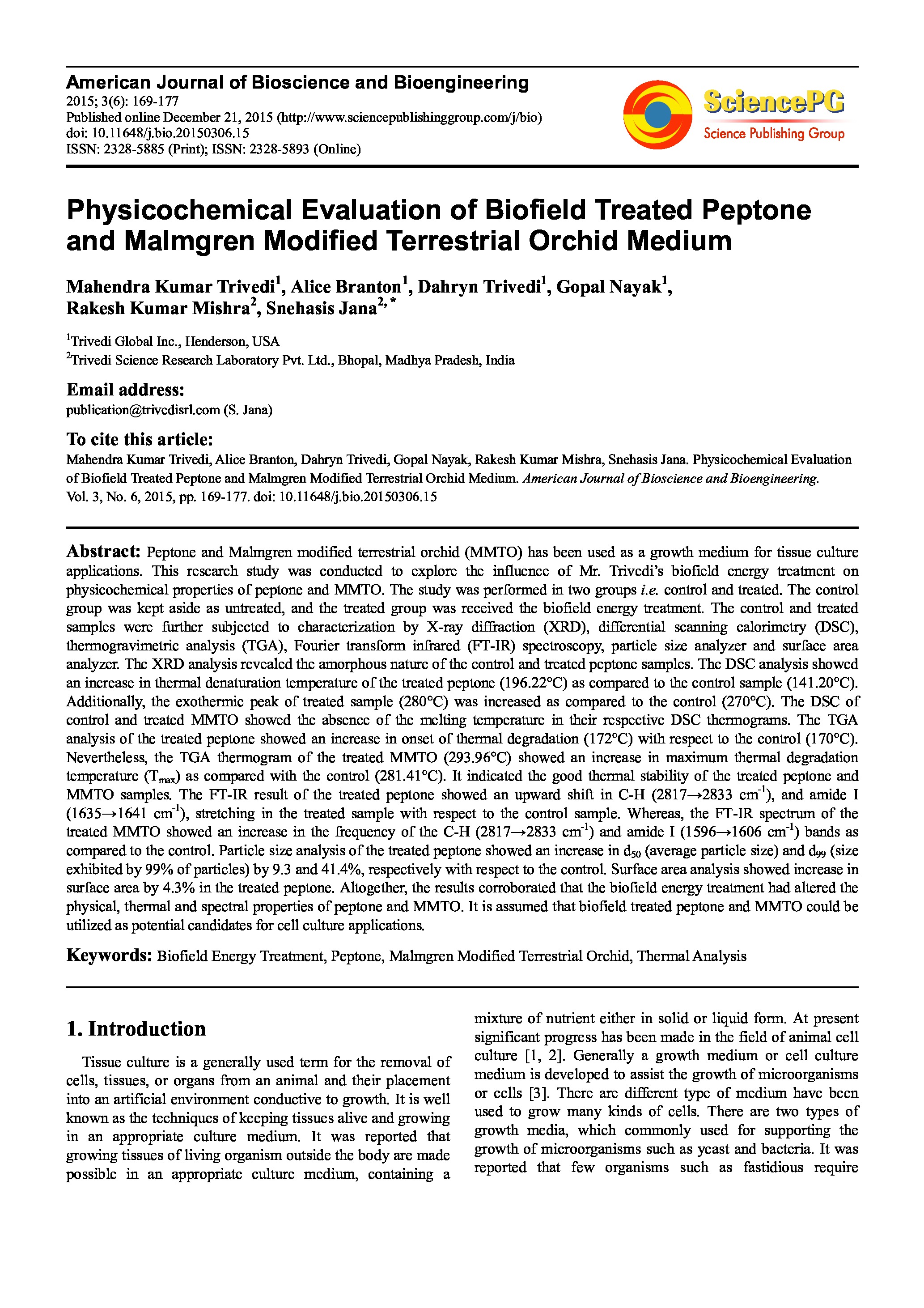Physicochemical Evaluation of Biofield Treated Peptone and Malmgren Modified Terrestrial Orchid Medium
Affiliation
Trivedi Global Inc., Trivedi Science Research Laboratory Pvt. Ltd.
Main category
Natural Sciences (Biology)
Abstract
Peptone and Malmgren modified terrestrial orchid (MMTO) has been used as a growth medium for tissue culture applications. This research study was conducted to explore the influence of Mr. Trivedi’s biofield energy treatment on physicochemical properties of peptone and MMTO. The study was performed in two groups i.e. control and treated. The control group was kept aside as untreated, and the treated group was received the biofield energy treatment. The control and treated samples were further subjected to characterization by X-ray diffraction (XRD), differential scanning calorimetry (DSC), thermogravimetric analysis (TGA), Fourier transform infrared (FT-IR) spectroscopy, particle size analyzer and surface area analyzer. The XRD analysis revealed the amorphous nature of the control and treated peptone samples. The DSC analysis showed an increase in thermal denaturation temperature of the treated peptone (196.22°C) as compared to the control sample (141.20°C). Additionally, the exothermic peak of treated sample (280°C) was increased as compared to the control (270°C). The DSC of control and treated MMTO showed the absence of the melting temperature in their respective DSC thermograms. The TGA analysis of the treated peptone showed an increase in onset of thermal degradation (172°C) with respect to the control (170°C). Nevertheless, the TGA thermogram of the treated MMTO (293.96°C) showed an increase in maximum thermal degradation temperature (Tmax) as compared with the control (281.41°C). It indicated the good thermal stability of the treated peptone and MMTO samples. The FT-IR result of the treated peptone showed an upward shift in C-H (2817→2833 cm-1), and amide I (1635→1641 cm-1), stretching in the treated sample with respect to the control sample. Whereas, the FT-IR spectrum of the treated MMTO showed an increase in the frequency of the C-H (2817→2833 cm-1) and amide I (1596→1606 cm-1) bands as compared to the control. Particle size analysis of the treated peptone showed an increase in d50 (average particle size) and d99 (size exhibited by 99% of particles) by 9.3 and 41.4%, respectively with respect to the control. Surface area analysis showed increase in surface area by 4.3% in the treated peptone. Altogether, the results corroborated that the biofield energy treatment had altered the physical, thermal and spectral properties of peptone and MMTO. It is assumed that biofield treated peptone and MMTO could be utilized as potential candidates for cell culture applications.
DOI
10.18147/smn.2016/paper:220
Do you have problems viewing the pdf-file? Download paper
here
If the paper contains inappropriate content, please
report the paper. You will be redirected to the landing page.
